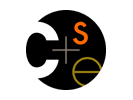
|

CSEP 561 Network Systems (Autumn 2010) |
|
 CSE Home CSE Home |
 About Us About Us |
 Search Search |
 Contact Info Contact Info |
11/5. Added links to the dropbox and gradebook below.
10/21. No paper discussion post next week per the revised schedule. Homework 2 is up.
10/14. Class on Tue 11/9 is in our usual room (JHN 102). Class on 11/18 is in the CSE distance education room (CSE 305).
9/29. The text arrives at the UW bookstore Monday Oct 4. I will send mail when I confirm it is in.
9/23. The book is due at the UW bookstore Friday Oct 1. In the meantime the first chapter is available electronically here. Note that this content is provided only for students in the class on the condition that it not be redistributed.
9/23. The first paper is on the schedule page and the questions for it are on the discussion board. Please read the paper and respond to the question before the first class.
Textbook: Tanenbaum and Wetherall, Computer Networks, 5th ed.
This is a new text that is required and on order at the UW bookstore. It will be available at the start of classes.
Pre-requisite:451 or equivalent, or permission of the instructor
Mailing List:We will use the UW Catalyst list "csep561a_au10@u.washington.edu". Students registered for the class are automatically signed up.
Anonymous Feedback: send it
to the instructor.
Schedule and Readings: Here.
Discussion board for blogs:Here.
Homeworks: Here. (Dropbox)
Gradebook: Here.
Overview: This course is on how to design (good) computer network protocols. While it is relatively easy to learn how a specific network protocol works, it is surprisingly hard to design a good network protocol. The Internet is a great example - one can learn most of the aspects of how the Internet protocols work in a relatively short period of time, but that won't help you (much) in designing a new protocol. The Internet is successful for reasons that are mostly hidden in its design, embodying specific, debatable tradeoffs in balancing robustness, interoperability, scale, evolution, flexibility, operator incentives and security. And while you might think that we don't need any new protocols beyond the Internet, a quick look inside the Internet shows that it is still evolving rapidly, along with mobile phone networks, wireless and home networks, RFID and sensor networks, and so on; the need for understanding how to design better protocols has never been greater. This course will introduce the different, known design techniques. It will ask you to demonstrate an understanding by synthesizing them and exploring tradeoffs in problems, class discussion, and by discussing research papers.
Readings: Think of this course as halfway between CSE 461 (undergraduate networks) and CSE 561 (graduate networks). The readings are textbook material and supplemental research papers. The textbook material is designed to help you understand the basics of networking principles; the research papers are to look at some issues more deeply. It is a requirement that you do the reading before class, as we will build on the textbook material and research papers as a starting point, not the end point.
Blogs:After reading the research paper for the week, you are required to add a unique comment to the discussion of one of the questions for the paper before 2pm on the day of class in which the paper will come up. (This is to give time for everyone to read the blog entries before class.) Note that the earlier you post, the easier it is to be unique. Please keep blog entries short: they can be anything that provides insight into the question being asked, e.g., providing a direct answer, agreeing and elaborating a point in prior answers, disagreeing with prior answers, pointing out related issues, etc. We will automatically grant one mulligan during the quarter, if you neglect to post.
Problem Sets: There will be four problem sets designed to test your understanding of material in the textbook and discussed in classes. The problem sets will cover a mix of methods, including short programming assignments, textbook questions and use of simple networking tools, hypothetical designs, and questions motivated by research papers. You may hand in one problem set up to 5 days late without penalty. Otherwise the penalty is 20% per day, and no homeworks will be accepted 5 or more days late.
Collaboration/Cheating: We encourage you to collaborate with your classmates and learn from each other in all aspects of the course, with one exception outlined below. To draw a clear line, you may use any idea from any other person or group in the class or out, provided you clearly state what you have borrowed and from whom. If you do not provide a citation - if you turn other people's work in as your own - you are cheating. Of course, we’ll be grading you on the ideas you’ve added. The one exception is that there will be an open book, take home final. The final is to be done individually without consultation with anyone else.Final: There will be a take home final to be done on the honor system. It will be available on the last class date and must be handed in by a deadline on the exam week. There is no midterm.
Grading: Problem sets: 45%; Final: 30%; Blogs: 15%; Class participation: 10%
|
Computer Science & Engineering University of Washington Box 352350 Seattle, WA 98195-2350 (206) 543-1695 voice, (206) 543-2969 FAX [comments to djw] | |